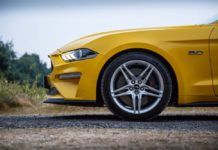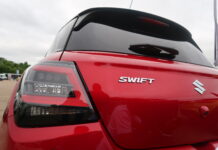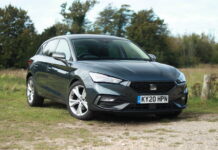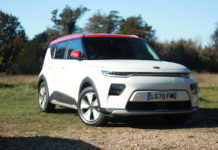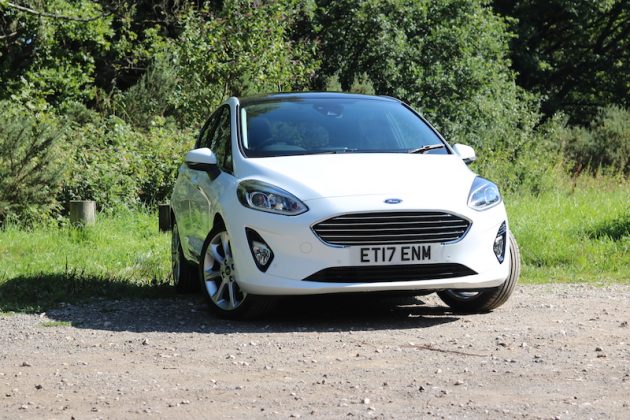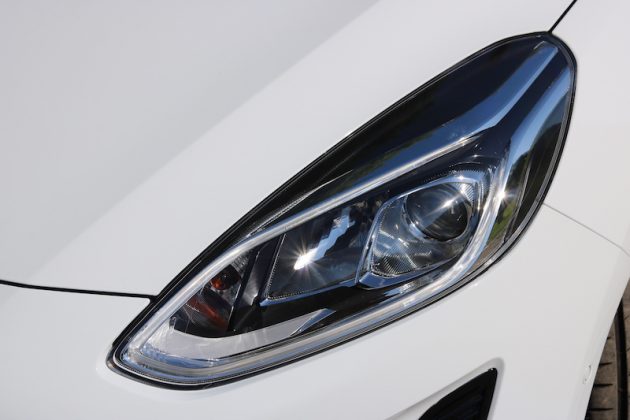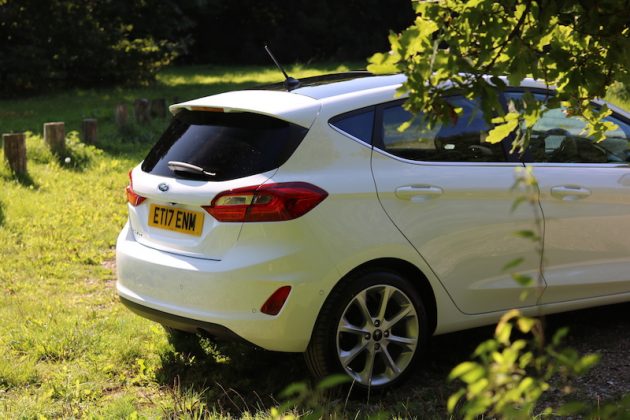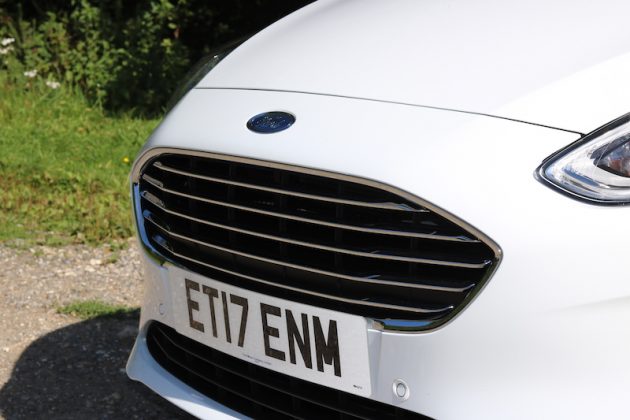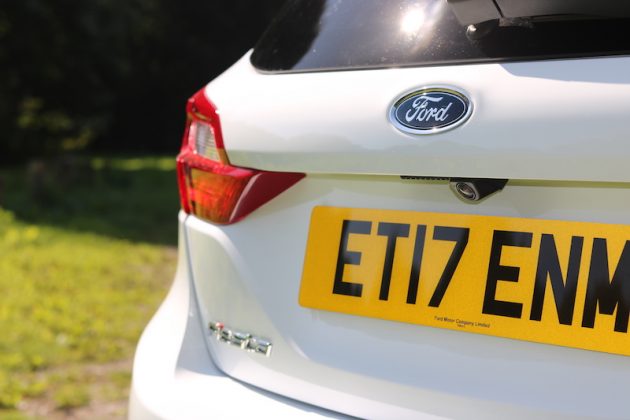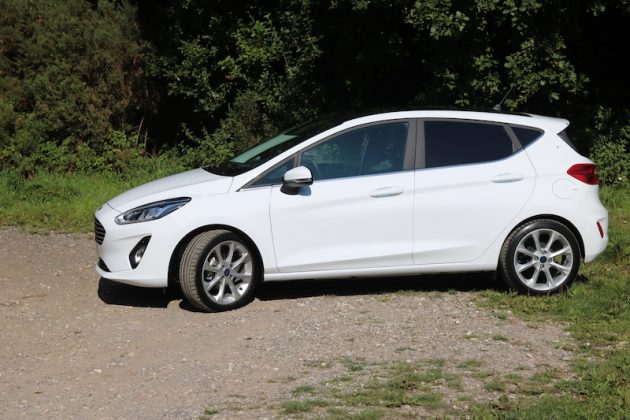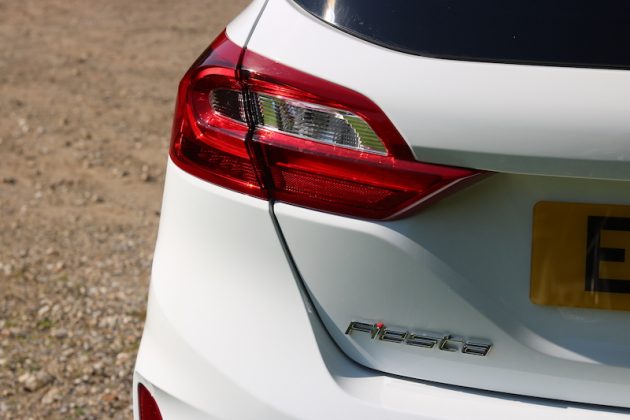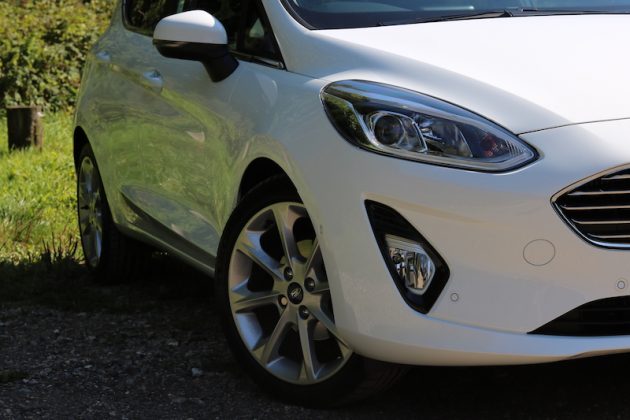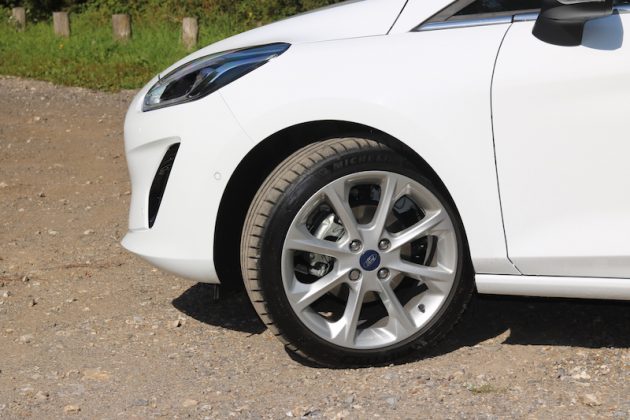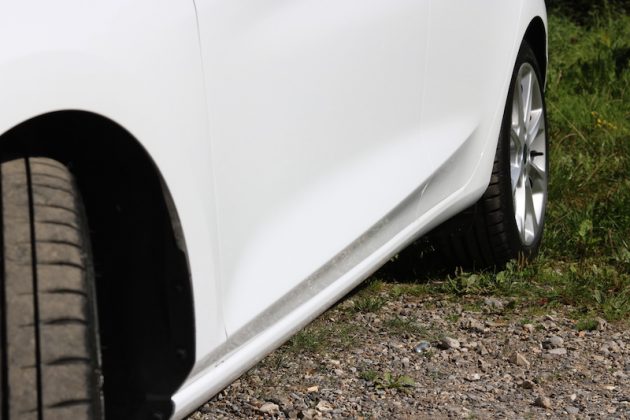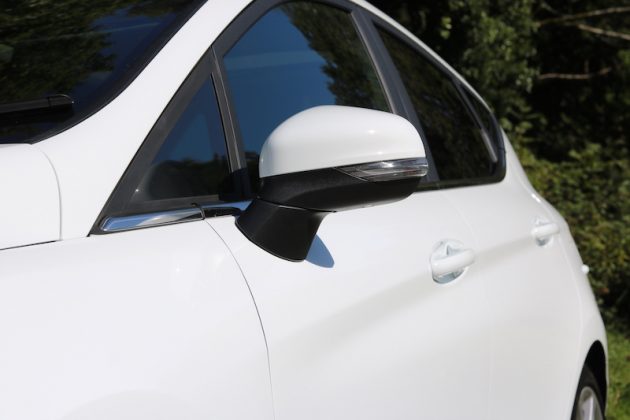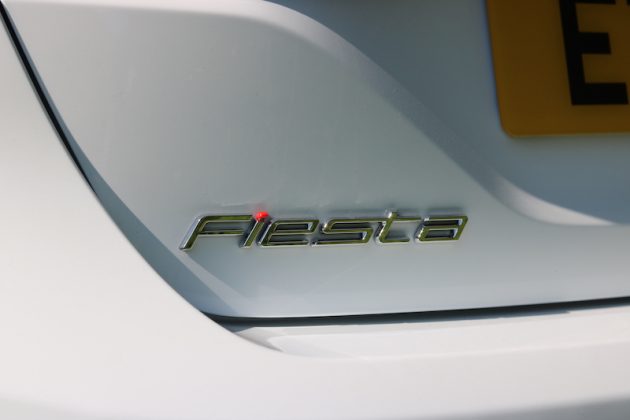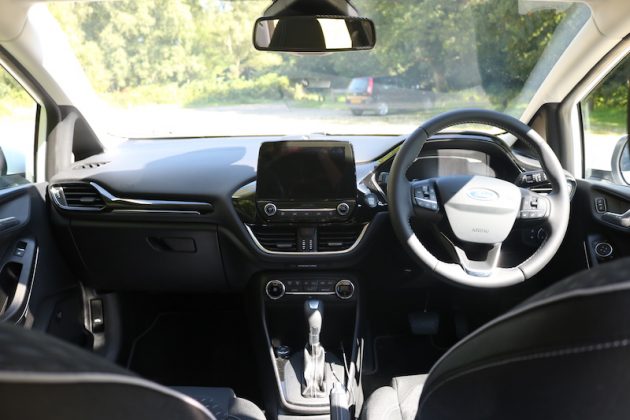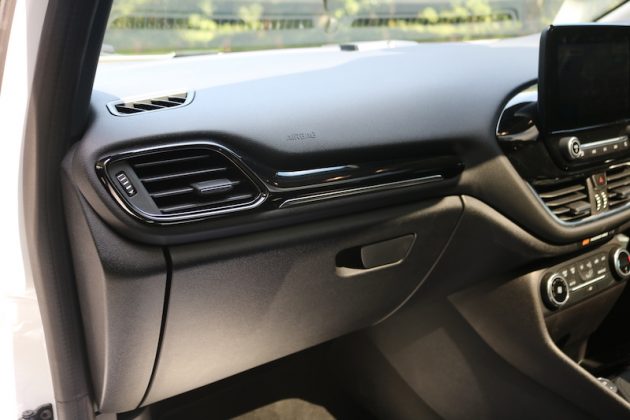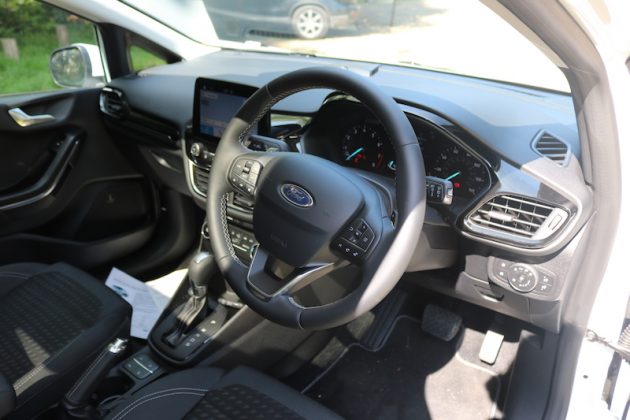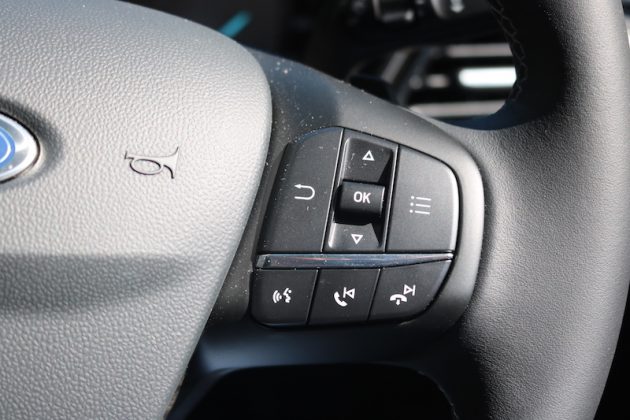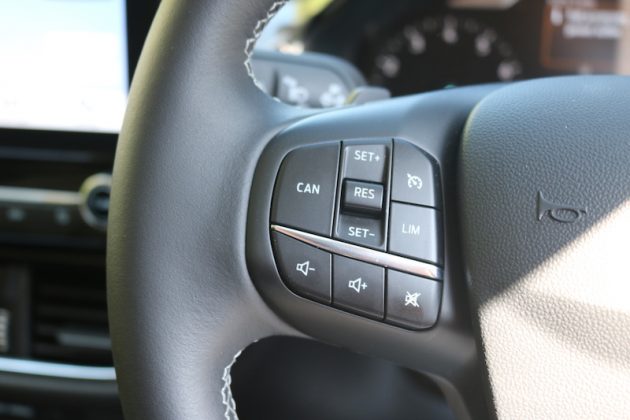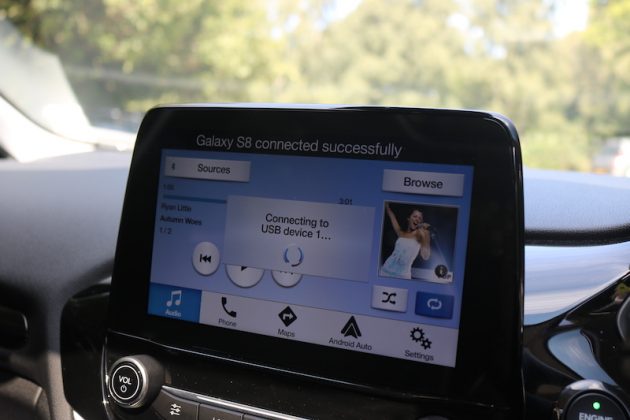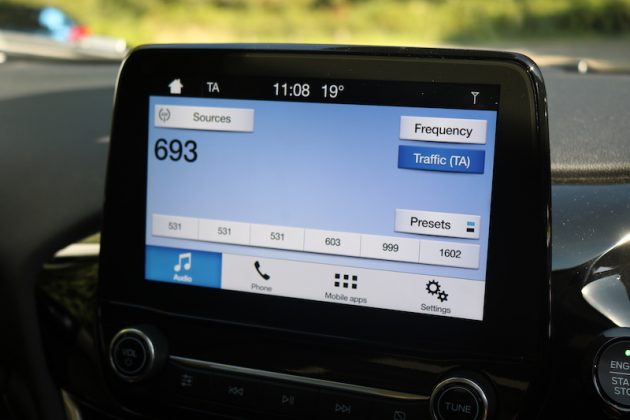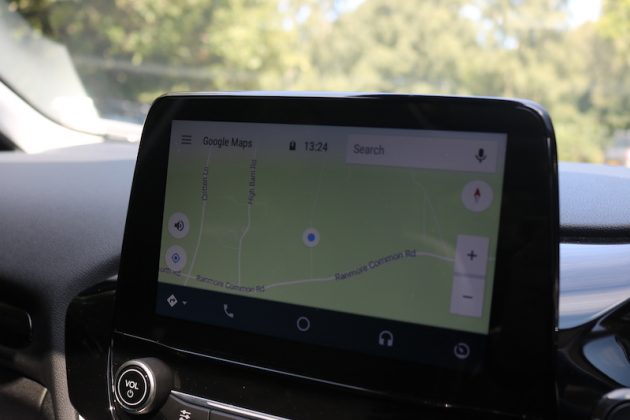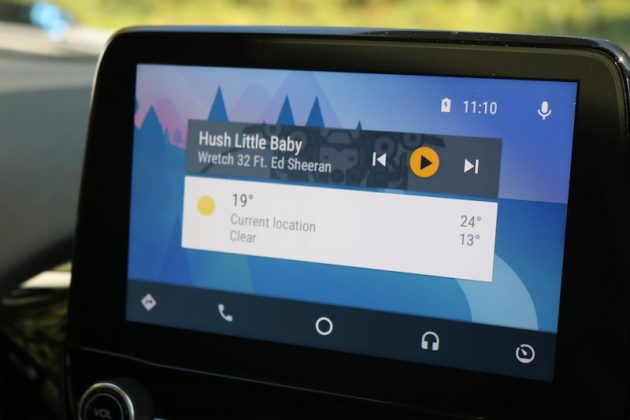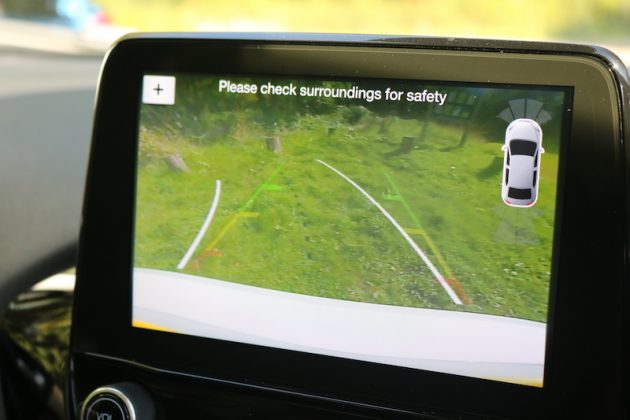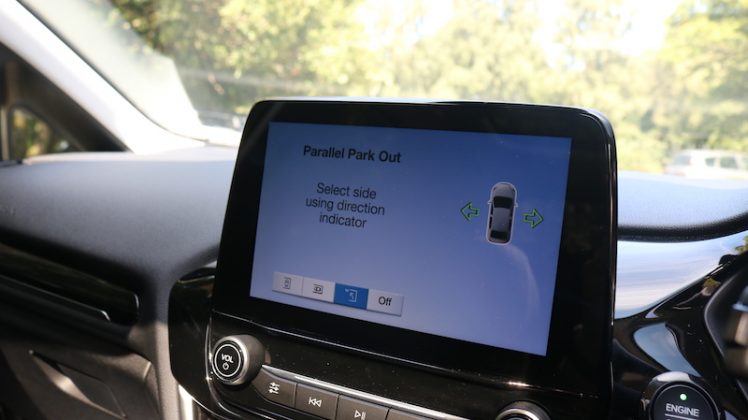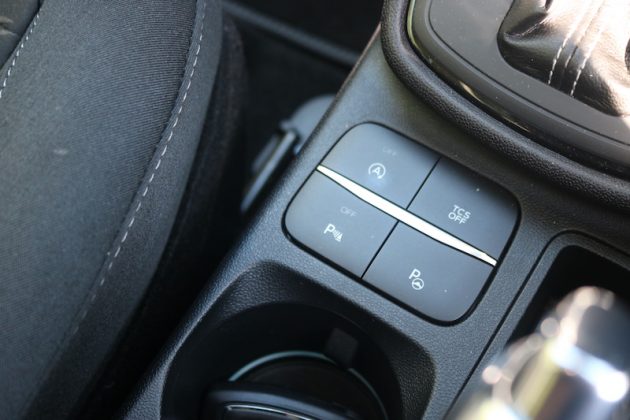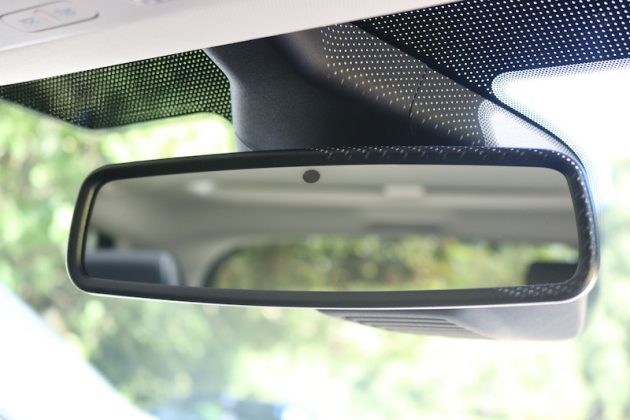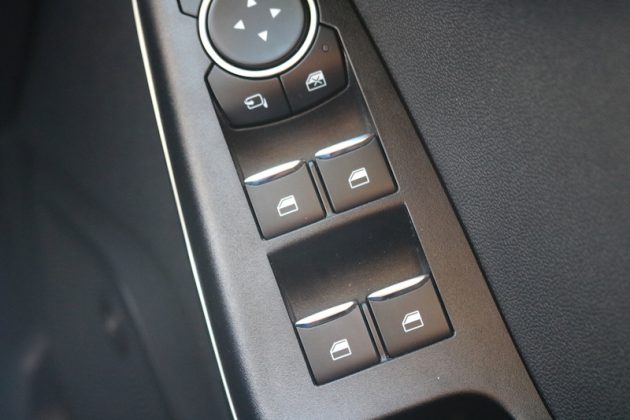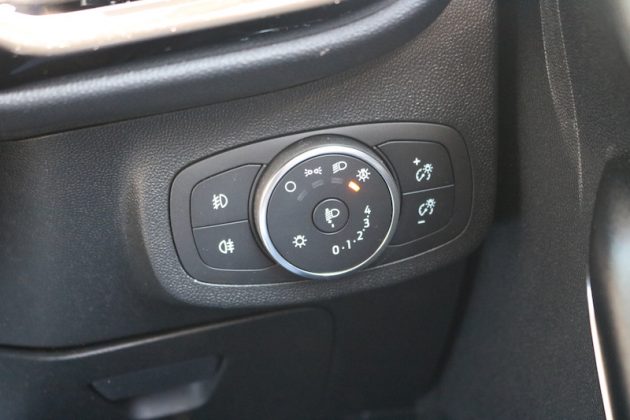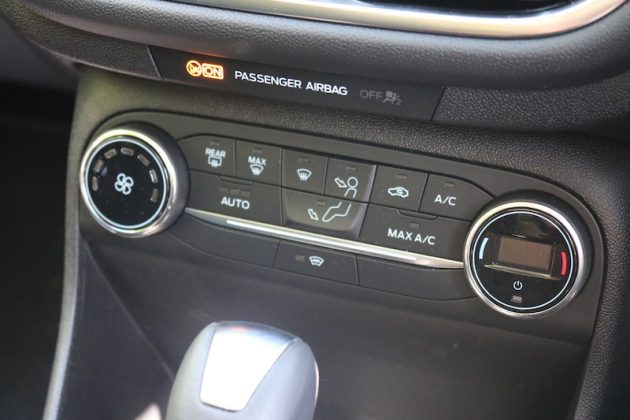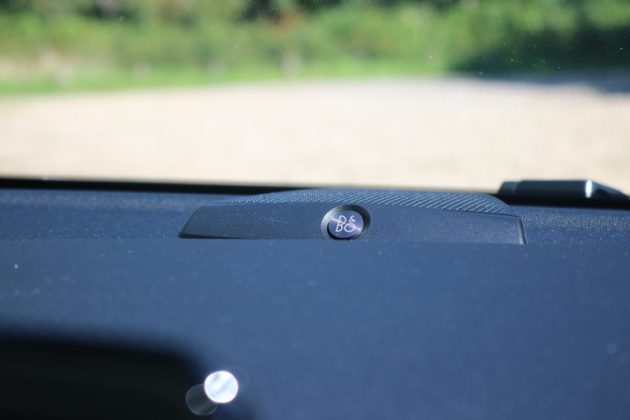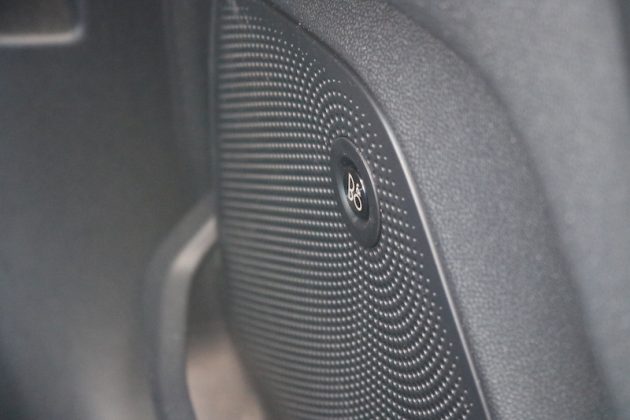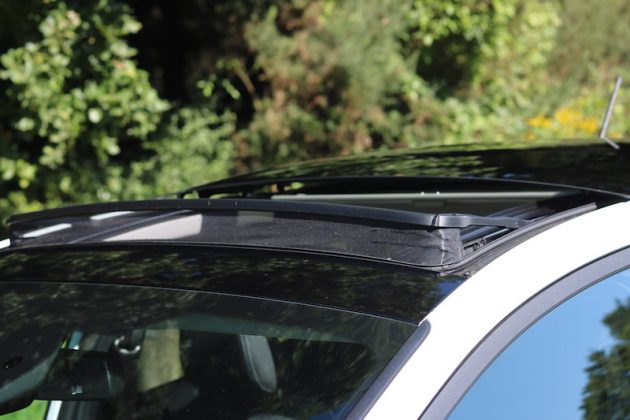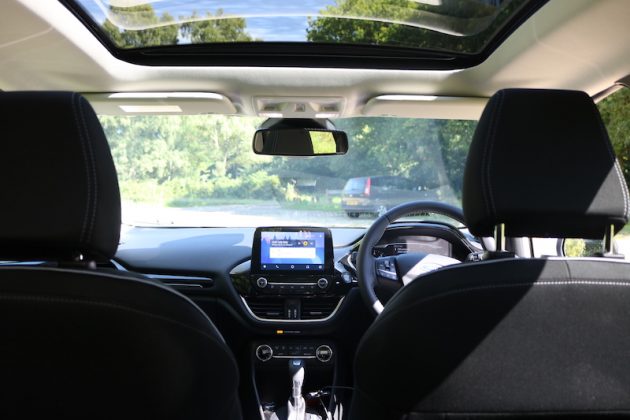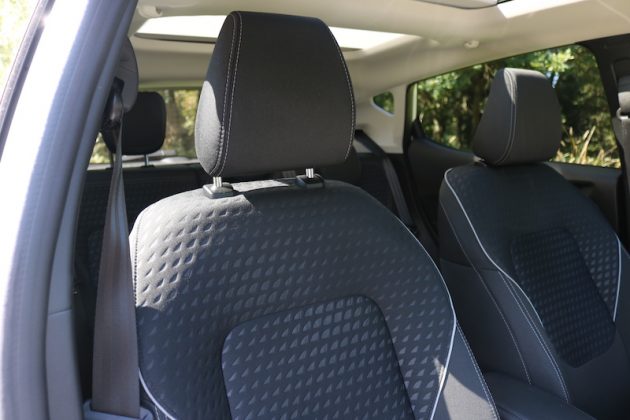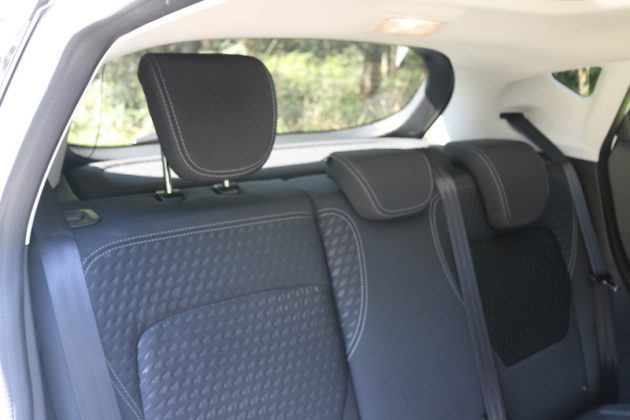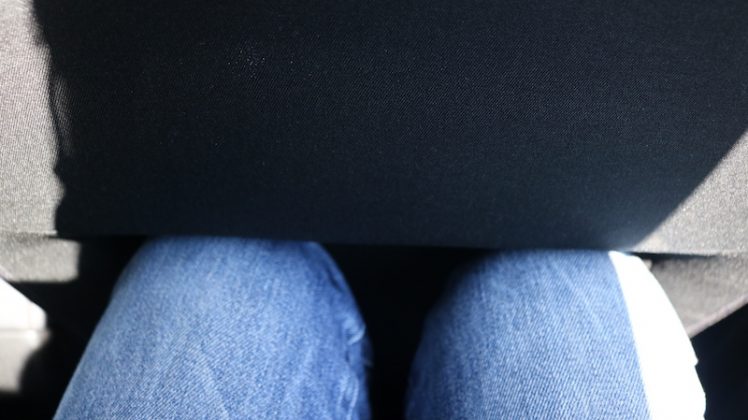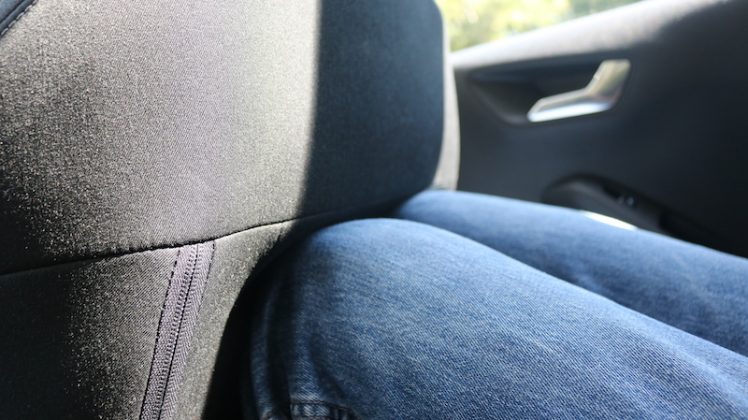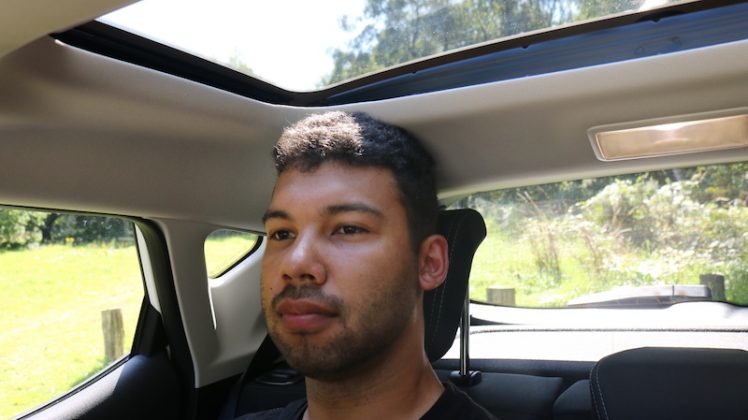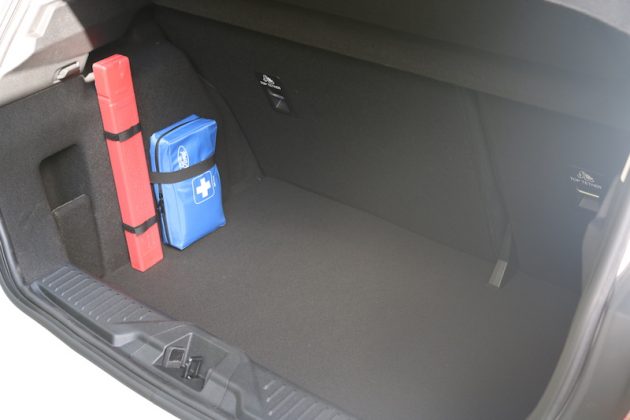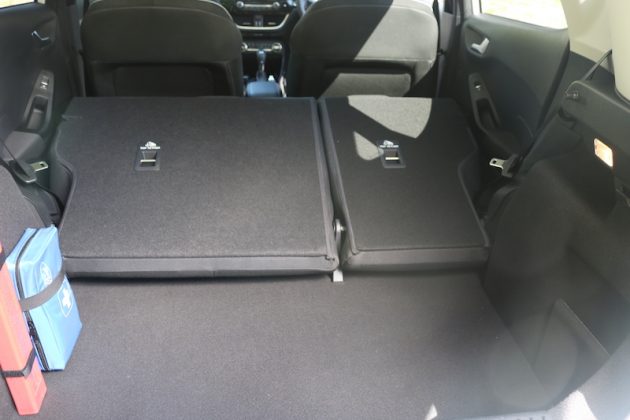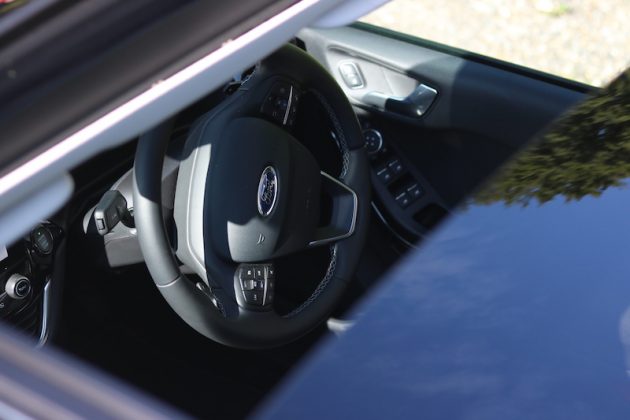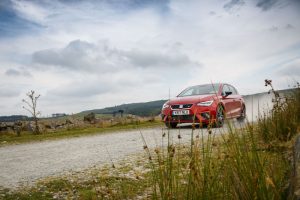The new Ford Fiesta is here and if you haven’t seen already, I’ve already driven it. That was however a first drive where I had limited time with the car – this time I’ve been able to spend a full week with the car. But am I as smitten with it as I was when I drove it earlier this year? Keep reading to find out.
Design and Styling
I’ll be honest, I’ve not been a fan of the styling when it comes to the new Fiesta. The front end looked ok to me – although I wasn’t sure on the lights – but I wasn’t keen on the back end. I think I’ve got to used to the vertical tapering rear lights of the car’s predecessor. However, the model tested came in the optional Frozen White (£250) finish and you know what? It suits the car rather well. Despite the colour’s name, I’m starting to warm to the popular supermini’s styling.
The base model may be called the Style, but it has make do with the 15″ steel wheels, but this is the mid-range Titanium model. This means you’ll get 16″ alloys as well as LED Night Signature on the rear lights and tinted windows. You also get a fancier grille and front fog lamps, and on the inside you’ll get ambient lighting. The ST-Line on the other hand offers a sportier edge whereas the Vignale gives a more upmarket feel.
Thankfully, the inside of the Fiesta is less cluttered thanks to a 8″ touchscreen (Titanium model upwards) that has helped to eradicate the army of buttons found in previous Fiestas. No more will you spend half your journey trying to find the button to tune the radio. The touchscreen makes use of Ford’s sync 3 system which is pleasant enough to use and gets the job done, although it’s not the best infotainment system I’ve used. Then again, it’s not the worst either.
Thanks to a soft touch dashboard and a padded leather steering wheel, the inside of the Fiesta is a pleasant place to be, although there are still a variety of hard plastics to be found both on the door cards and lower down in the cabin. Despite this, the inside feels grown up and well nailed down. As I said earlier, it’s a definite improvement compared to the previous model.
Rating:  (4 / 5)
(4 / 5)
Equipment
There are fair few trim levels for the new Fiesta so there is going to a be good chance to get the equipment you want. The Style offers the basics such as remote central locking, front electric windows, air conditioning and Bluetooth. Quite impressively though, automatic headlights and lane keep assist come standard. The next step up will give you the Zetec model, which historically has been the brand’s most popular trim in the Fiesta.
This adds 15″ alloy wheels, 8″ Sync 3 infotainment system, leather trimmed steering wheel, handbrake and gear lever, plus front fog lamps, quickclear heated windscreen and LED daytime running lights. The model tested here is the Titanium, which adds cruise control, keyless start, climate control, auto-dimming rear view mirror, auto high beam, 16″ alloy wheels, rear privacy glass and automatic wipers.
The ST is not here yet, but you can have the ST-Line which gives looks similar to the ST, but without the high running costs of owning a performance hatch, or if you like your music, you can have the B&O Play edition. This features a 10 speaker sound system with 360 degree sound to make sure that whatever you happen to listen to, it’ll sound good. Unless it’s ABBA, I don’t like ABBA.
At the top of the range you have the Vignale, which is able to offer a more upmarket feel. This’ll add a panoramic roof that opens, Vignale Black Ruby leather heated seats and steering wheel, rear parking sensors with camera, as well as 17″ alloys. There will also be an Active model coming, which will offer an SUV inspired design. No I’m not sure on that one either…
Rating:  (4.5 / 5)
(4.5 / 5)
Space and Comfort
The front of the Fiesta is a good place to be, there is an ample amount of space to be had and there is a good level of adjustment in both the seat and steering wheel to get a good driving position. The seats themselves are comfortable and spongy, making them ideal for longer journeys. The back of the Fiesta isn’t quite as good I’m afraid. Taller passengers will find the legroom on the tight side although the headroom is more agreeable.
Having said that, if you select the panaoramic roof as fitted to this model, you’ll find less headroom than a standard model. Shorter passengers and children will have no such problem though. On the plus side, the boot is of a decent size, albeit not class leading. 292 litres is on offer here, which can be increased to 1,093 with the rear seats folded down. This represents a slight increase on the previous model.
Getting a good driving position is made easy as both the steering wheel and seat offer a good level of adjustment. The seats themselves are comfortable and spongy, so I imagine this would be suitable for longer journeys. This model has the optional driver’s seat and passenger seat lumbar and height adjustment to make it easier to get a comfortable seating position.
Rating  (3 / 5)
(3 / 5)
What’s It Like To Drive?
The new Fiesta is available with either a 1.1 litre petrol engine, the award-winning 1.0 litre EcoBoost petrol and there is a new a 1.5 litre diesel. It’s the 98bhp EcoBoost engine that has been fitted to this test model, which has been mated to a 6-speed automatic ‘Powershift’ gearbox. 170Nm of torque goes along with the 98bhp, meaning the car will hit 62mph in 12.2 seconds and it will top out at a top speed of 111mph.
The 6-speed manual will give you more speed though and in all honesty, I would recommend that every day of the week. It performs better, it’s a cheaper option, it’s more engaging, and it offers considerably better fuel economy. But let’s get back to the powershift. Around town you’ll find there will be little problem and it’s smooth enough, but put your foot down on faster roads and you’ll catch it out.

Mash your foot in the carpet and you’ll be greeted with a pause whilst the gearbox decides how it’s going to react and then all of a sudden you’re greeted with a surge of revs and it will jerk you forward. Popping the gearbox in ‘S’ certainly helps matters, but it’s still not perfect. You can however, take charge yourself using the flappy paddles and that definitely helps to improve things are the changes become a lot smoother.
Even this is not enough to make up for the engagement that’s to be had from using the slick 6-speed manual, which I think is a much better fit for the zesty EcoBoost engine. We all know how good this engine and it’s little wonder it has won engine of the year 6 years running. It’s nippy around town, it makes a pleasant noise and it’s frugal too.
The Fiesta may have grown up, but it’s still willing to let its sensible hair down to prove it can still be dynamic to drive. The steering has got a nice weight to it and the car is still as good as ever on the bendy stuff. That’s not to say the ride has been compromised, although the optional 17″ alloys do create a fair bit of tyre noise. I’d recommend that you stick with the regular 16″ alloys if you want a better ride and more refinement.

Rating  (4 / 5)
(4 / 5)
Fuel Economy
As mentioned earlier, one of the pitfalls of having the automatic gearbox is that you get noticeably less fuel economy. On a combined run, Ford quotes 54.3 mpg with CO2 emissions of 118g/km. The same engine with the manual on the other hand, will deliver 65.7mph with a more polar bear friendly 97g/km of CO2 emissions.

The most economic engine in the Fiesta lineup is the new 1.5 litre diesel, which is able to deliver a stonking 88.3mpg in its 85bhp power output (when three-door is selected). The CO2 emissions naturally fall too – a tree-hugging 82g/km to be precise. In my experience, on a combing run I was hitting figures between low and mid 40s, which is not the end of the world, but it’s far from groundbreaking.
Rating  (3 / 5)
(3 / 5)
Verdict
It could have been rather easy for Ford to be complacent with the new Fiesta, but instead it’s successfully refined the winning formula. The car is more grown up and refined, but without losing its fun, dynamic edge that has made the car so popular. My only real gripe is the lack of space in the rear, but I doubt that will be enough to put of the majority of buyers.
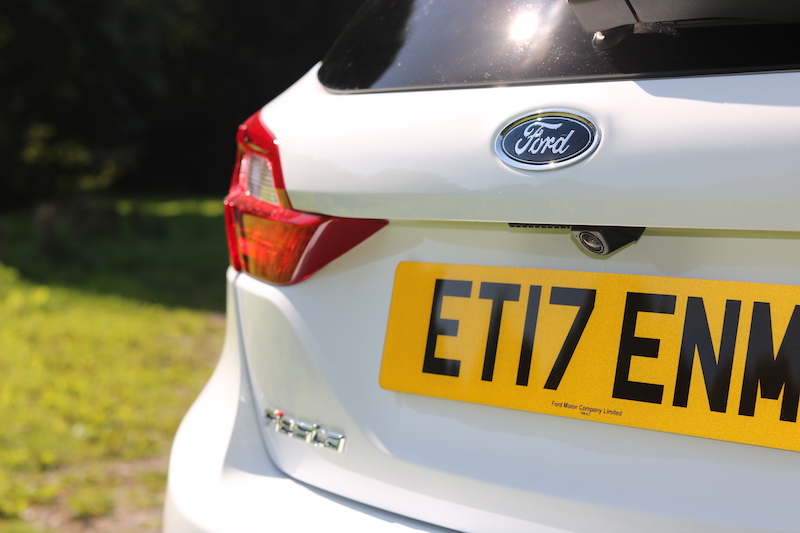
The new Fiesta will face stiff competition though as both SEAT and VW have released new models of the Ibiza and the Polo, and to be honest, the Ibiza could be one to watch. Having said that, I would be very surprised if the new Fiesta did not make it 9th year in a row at the top of the sales table.
Car Obsession Rating:  (4.5 / 5)
(4.5 / 5)
Pros:
- Fun to drive
- Decluttered dash
- Zesty engine
- Good level of equipment
- Comfortable
Cons:
- Auto gearbox is not fantastic
- Space is limited in the rear
- Audible tyre noise on 17″ alloys
- Cheap plastics in the cabin
Rivals
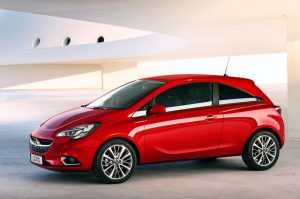 Vauxhall Corsa
Vauxhall Corsa
Like the Fiesta, the Vauxhall Corsa has been a popular car in the UK for many years as it offers good value but others have noted that it’s not as good to drive. Others have reported vague steering, plus the exterior design is similar to its predecessor, which may put some off.
SEAT Ibiza
SEAT may not have the biggest badge appeal in the UK, but having driven the new Ibiza, I believe this poses the biggest threat to the new Fiesta. It’s also a very good car to drive, but I’d argue it’s better looking, plus it has more space in it. The all-new Ibiza does lot of things well, just like the Fiesta. I’m keen to see how the two compete.
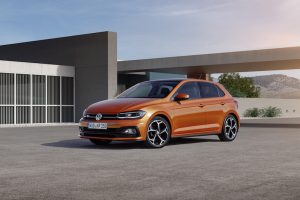 Volkswagen Polo
Volkswagen Polo
The Polo, like the Fiesta and the Corsa, has been a popular car in the UK for a long time. The sixth generation is on its way and will offer more space and connectivity. UK prices for the new model have not been announced yet as the car is due to go on sale in October, but expect it to be similar to the Fiesta.

